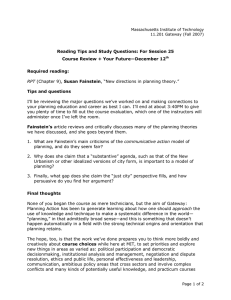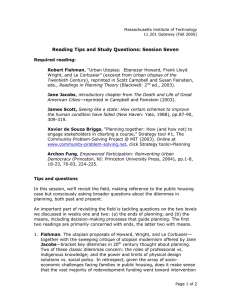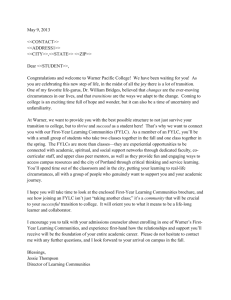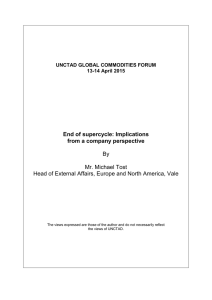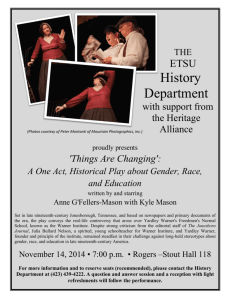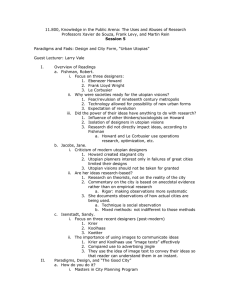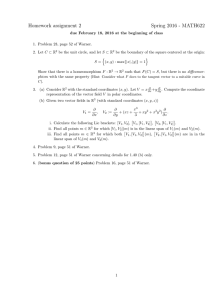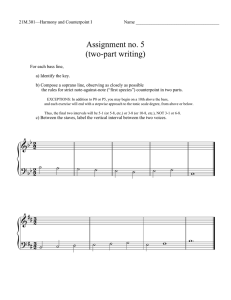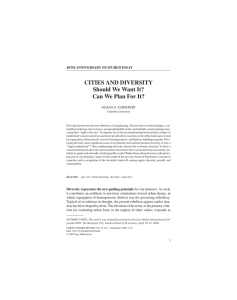Reading Tips and Study Questions: Session Five
advertisement
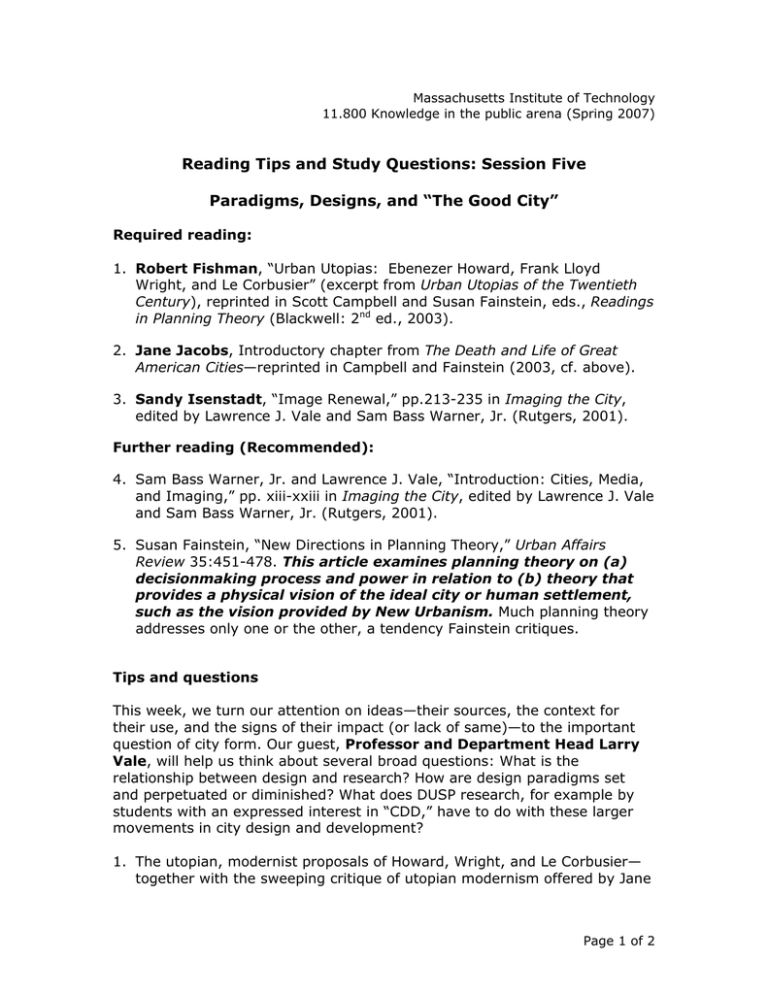
Massachusetts Institute of Technology 11.800 Knowledge in the public arena (Spring 2007) Reading Tips and Study Questions: Session Five Paradigms, Designs, and “The Good City” Required reading: 1. Robert Fishman, “Urban Utopias: Ebenezer Howard, Frank Lloyd Wright, and Le Corbusier” (excerpt from Urban Utopias of the Twentieth Century), reprinted in Scott Campbell and Susan Fainstein, eds., Readings in Planning Theory (Blackwell: 2nd ed., 2003). 2. Jane Jacobs, Introductory chapter from The Death and Life of Great American Cities—reprinted in Campbell and Fainstein (2003, cf. above). 3. Sandy Isenstadt, “Image Renewal,” pp.213-235 in Imaging the City, edited by Lawrence J. Vale and Sam Bass Warner, Jr. (Rutgers, 2001). Further reading (Recommended): 4. Sam Bass Warner, Jr. and Lawrence J. Vale, “Introduction: Cities, Media, and Imaging,” pp. xiii-xxiii in Imaging the City, edited by Lawrence J. Vale and Sam Bass Warner, Jr. (Rutgers, 2001). 5. Susan Fainstein, “New Directions in Planning Theory,” Urban Affairs Review 35:451-478. This article examines planning theory on (a) decisionmaking process and power in relation to (b) theory that provides a physical vision of the ideal city or human settlement, such as the vision provided by New Urbanism. Much planning theory addresses only one or the other, a tendency Fainstein critiques. Tips and questions This week, we turn our attention on ideas—their sources, the context for their use, and the signs of their impact (or lack of same)—to the important question of city form. Our guest, Professor and Department Head Larry Vale, will help us think about several broad questions: What is the relationship between design and research? How are design paradigms set and perpetuated or diminished? What does DUSP research, for example by students with an expressed interest in “CDD,” have to do with these larger movements in city design and development? 1. The utopian, modernist proposals of Howard, Wright, and Le Corbusier— together with the sweeping critique of utopian modernism offered by Jane Page 1 of 2 Jacobs—bracket key dilemmas in 20th century thought about planning and the “good” city. Why were societies and the professions ready for the modernists’ utopian visions, according to Fishman? Is there evidence that the power of their ideas had anything to do with research? 2. How did Jacobs structure her argument to respond to the modernists, and following the question above, can we call her ideas “research-based”? How would you update her claims or approach today? Note: One might have very different answers to that last question if trying to use research knowledge or other ideas in, say, China as opposed to Europe, or America as opposed to South Africa or Brazil. 3. According to Isenstadt, how and why have influential urban designers used imagery, rather than “data,” to market their ideas? Further Reading (Recommended only): 4. What are the two new elements in today’s “image climate,” according to Bass Warner, Jr. and Vale? What are the major implications for planning? 5. Why is a physical vision of the good city important to planning theory, according to Fainstein? What role might research knowledge have in developing that vision and connecting it to the other elements of planning theory, such as theories of power, learning, and decisionmaking process? What other forms of knowledge are likely to remain important, and how can researches employ or address them? Page 2 of 2
